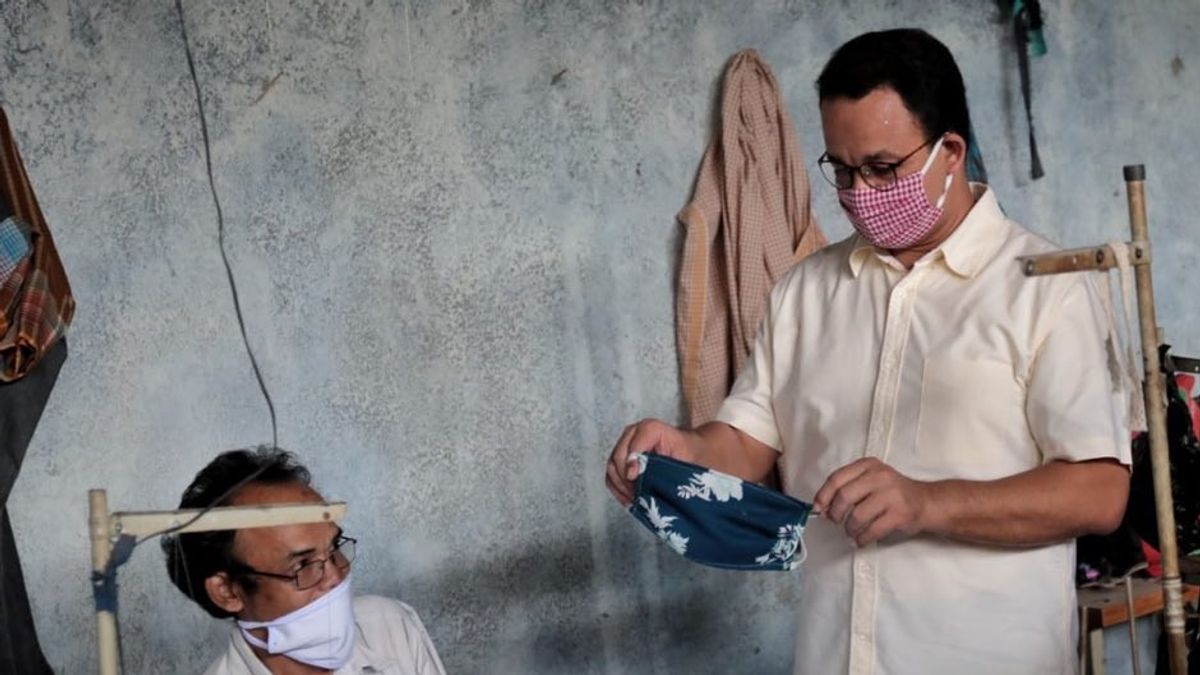JAKARTA - DKI Jakarta's Large-Scale Social Restrictions (PSBB) will be extended again from May 22 to June 4. DKI Jakarta Governor Anies Baswedan hopes that in June the COVID-19 cases will decrease. So that the hope is that the PSBB will not be extended again.
"Hopefully this will be the final PSBB if we are disciplined. After that, we can start a new phase, we can do activities outside the home as before, and of course with the new protocol," said Anies, Tuesday, May 19.
However, an epidemiologist from the University of Indonesia, Tri Yunis Miko Wahyono, doubts Anies's hopes will come true. Miko argued that currently the transmission of COVID-19 is still moving from one population to another. He calculated that even until the end of June, the COVID-19 cases had not slowed down.
"In my opinion, PSBB cannot be the last one because cases are still moving from population to population. Moreover, DKI has a large population with dense settlements," said Miko when contacted by VOI.
Miko confirmed that the policy of limiting activities that were only carried out at home for a number of people was able to minimize the transmission of COVID-19.
Based on data held by the DKI Pemprov from a study by the UI Faculty of Public Health team, Jakarta residents who live at home reach nearly 60 percent, or around 6 million of the total 10 million population.
However, according to him, this number is still not effective in reducing the number of transmission of the corona virus. This is because 4 million people are still active outside the home. Not to mention, self-isolation of COVID-19 patients in dense settlements is ineffective.
"It should be that more than 80 percent of the people who live at home can just slow down the case curve," he explained.
Contact tracing of COVID-19 cases is considered sluggishMiko also doubts that the graph of the accumulated case increase is really slowing down. As Anies said, until mid-May, it was calculated that one person infected with COVID-19 could spread to another person. This figure, Anies considered, had slowed down from last March, when one person infected four people.
However, according to him, this does not mean that the number of transmission of COVID-19 cases per person has decreased. According to him, currently the DKI Pemprov is no longer massive in carrying out contact tracing.
Miko's argument was sound. If you pay attention, the number of people under monitoring (ODP), which is mostly recorded from the results of tracing the contacts of people infected with COVID-19 in DKI, currently only reaches 21,743 people.
Meanwhile, positive confirmed cases have now reached 6,053 people. This means that the ratio or ratio of positive cases and ODP is only 1: 3.5. In fact, when compared to provinces that also have a high number of cases, the ratio of ODP and positivity is quite large.
In East Java, there were 2,372 positive cases and 22,985 ODP cases, meaning that the ratio was positive and ODP was 1:10. In West Java, there were 1,700 positive cases and 46,420 ODPs, meaning that the positive ratio and ODP were 1:27. In Central Java, there were 1,212 positive cases and 33,837 ODP, meaning that the positive ratio and ODP were 1:27.
"The DKI Provincial Government seems to be overwhelmed with contact tracing so that the investigation is not carried out massively. In fact, normally, the ratio of positive cases to ODP is 1 in 10," Miko explained.
"If tracing with no maximum effort is certainly one of the factors causing the positive case curve in DKI to slow down. In fact, if tracing is carried out massively, there will also be a lot of cases that will increase every day. "he added.
The English, Chinese, Japanese, Arabic, and French versions are automatically generated by the AI. So there may still be inaccuracies in translating, please always see Indonesian as our main language. (system supported by DigitalSiber.id)













